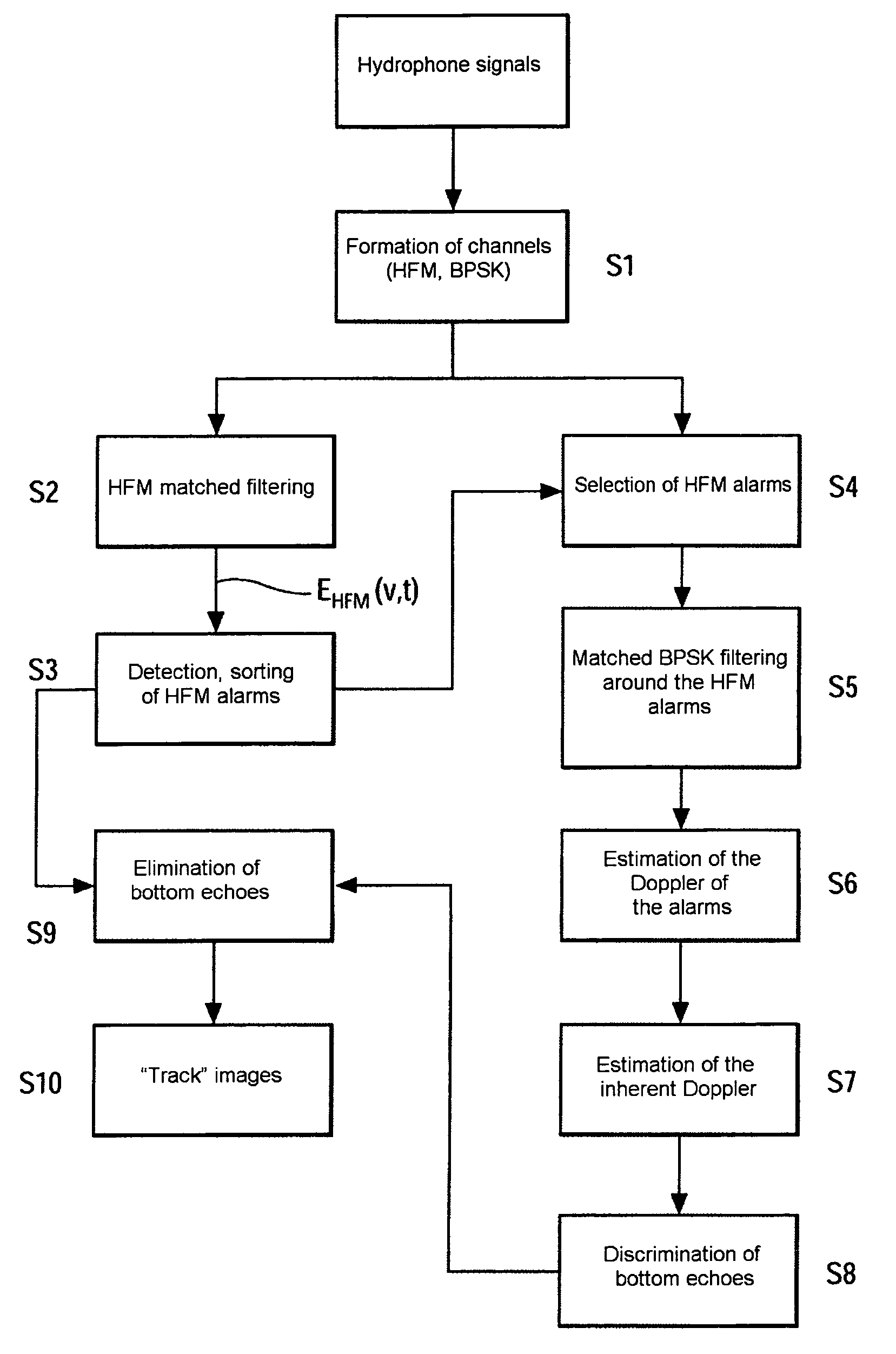Signal-processing method and active sonar implementing same
a technology of active sonar and signal processing, applied in the field of underwater acoustics, can solve the problems of limiting the operational usefulness of sonar and correspondingly large processing cost, and achieve the effect of reducing the false alarm ra
- Summary
- Abstract
- Description
- Claims
- Application Information
AI Technical Summary
Benefits of technology
Problems solved by technology
Method used
Image
Examples
Embodiment Construction
[0020]FIG. 1 represents the successive steps of the method according to the invention.
[0021]In a known manner, the hydrophone signals undergo upstream processing (demodulation, filtering, amplification, etc.) and are then digitized. In the case of an active sonar, these signals contain the signals emitted after propagation through the water via the direct path and the reflected paths to which are added the reverberated signals. In particular, among the signals reflected, the echoes originating from the sea bottom constitute a significant source of false alarms, in particular at shallow depths.
[0022]According to the invention, at each recurrence are emitted two coded pulses, HFM and BPSK, whose characteristics make it possible to separate them on reception. They can be emitted at different instants with totally or partly overlapping frequency bands, or else be emitted simultaneously in distinct frequency bands, or both at once.
[0023]Referring to FIG. 1, the processing of the hydropho...
PUM
 Login to View More
Login to View More Abstract
Description
Claims
Application Information
 Login to View More
Login to View More - R&D
- Intellectual Property
- Life Sciences
- Materials
- Tech Scout
- Unparalleled Data Quality
- Higher Quality Content
- 60% Fewer Hallucinations
Browse by: Latest US Patents, China's latest patents, Technical Efficacy Thesaurus, Application Domain, Technology Topic, Popular Technical Reports.
© 2025 PatSnap. All rights reserved.Legal|Privacy policy|Modern Slavery Act Transparency Statement|Sitemap|About US| Contact US: help@patsnap.com



